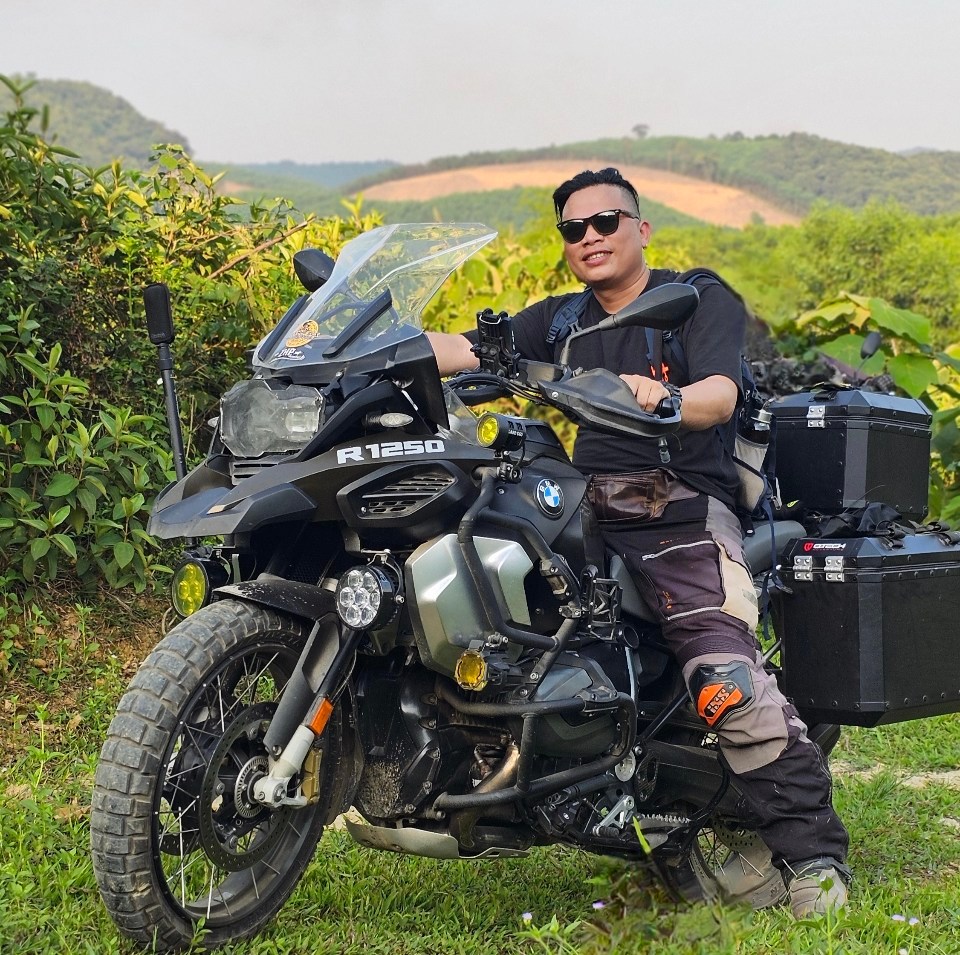Exploring Vietnam by motorbike offers a sense of freedom and excitement, but it can also be risky if you’re not familiar with the traffic laws. To ensure a safe and smooth journey, it’s important to understand the basic rules of riding a motorbike in Vietnam. In this article, Vietnammotorbiketour will help you learn about essential traffic regulations, important safety notes, and practical riding tips so you can fully enjoy your adventure.
About the unique traffic situation in Vietnam
When arriving in Vietnam, many travelers are immediately struck by the country’s vibrant energy and unique cultural rhythm—especially when it comes to traffic. In major cities like Hanoi and Ho Chi Minh City, or when joining motorbike tours around Hoi An or Hue, you’ll encounter bustling streets filled with thousands of motorbikes, cars, and various other vehicles moving all at once. The sound of honking horns blending with the city’s fast-paced rhythm creates a traffic scene unlike anywhere else in the world.
Traffic in Vietnam is often crowded, especially during rush hours, and traffic jams can occur quite frequently. However, this has become a kind of “cultural signature”—an integral part of daily life for local people. For many international travelers, navigating Vietnam’s traffic is not only an exciting challenge but also a meaningful way to better understand the local lifestyle and pace of life.

General rules for riding a motorbike in Vietnam that every tourist should know
If you’re planning to explore Vietnam by motorbike, this adventure will surely bring you unforgettable experiences — from the bustling streets of Hanoi and Saigon to the wild, scenic mountain roads. However, before you hop on your bike and begin your journey, it’s essential to understand the basic traffic rules in Vietnam.
Traffic here may differ significantly from what you’ve experienced in other countries. Understanding and following the local laws not only helps keep you safe but also shows respect for local culture — something every responsible traveler should keep in mind.
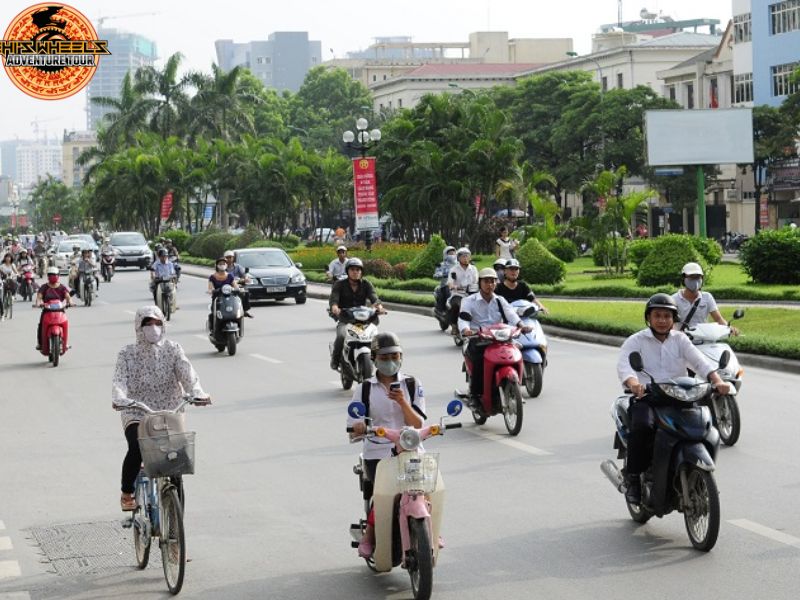
Things to keep in mind before riding a motorbike in Vietnam
If you want to explore Vietnam in the most free and convenient way, renting a motorbike is the perfect choice. However, to make sure your trip goes smoothly and safely, there are a few important things to keep in mind before you start your journey.
Carry your driver’s license and passport
According to Vietnamese law, traffic police have the right to stop your vehicle and check your documents at any time — even if you haven’t violated any rules. Therefore, you should always carry your original International Driving Permit (IDP) along with a valid passport when riding on the road.
If you don’t have these documents or fail to present them when requested, you may face administrative fines, and in some cases, the police may impound your motorbike for further processing. Don’t let a simple oversight turn into an unnecessary hassle during your trip.
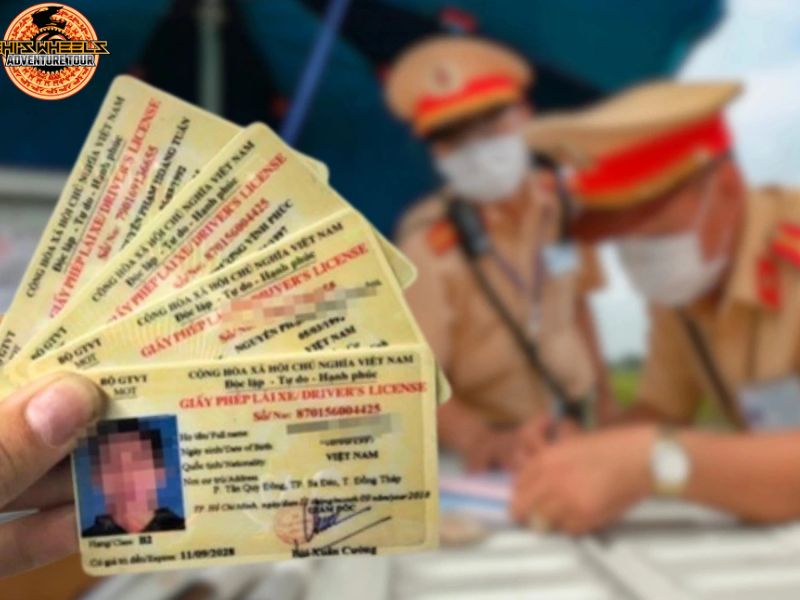
Wearing a helmet is mandatory when riding a motorbike
A helmet is a mandatory piece of equipment under Vietnamese traffic law. Whether you’re riding in the city or taking a long road trip, wearing a helmet is not only a way to avoid fines (ranging from 200,000 to 300,000 VND) but also a crucial safety measure that protects you from head injuries in case of an accident. At our motorbike rental company, every bike comes with a standard, high-quality helmet for your use. Make sure you wear it properly and snugly fitted to ensure maximum safety throughout your journey.
Always follow the speed limits when riding a motorbike in Vietnam
When riding a motorbike in Vietnam, controlling your speed is extremely important to ensure safety and avoid unnecessary trouble. Each type of road in Vietnam has its own specific speed limits, clearly indicated by traffic signs. As a tourist, you should pay special attention to these signs to make sure you comply with local regulations.
Speed Limits for Motorbikes (According to the Vietnamese Traffic Law, updated in 2023)
Within Populated Areas:
- Dual carriageways or one-way roads with two or more lanes: maximum speed 60 km/h
- Two-way roads or one-way roads with only one lane: maximum speed 50 km/h
Outside Populated Areas:
- Dual carriageways or one-way roads with two or more lanes: maximum speed 70 km/h
- Two-way roads or one-way roads with only one lane: maximum speed 60 km/h
Note: These limits may vary depending on the specific area, so always pay close attention to the road signs to ensure you’re driving within the legal speed limits.
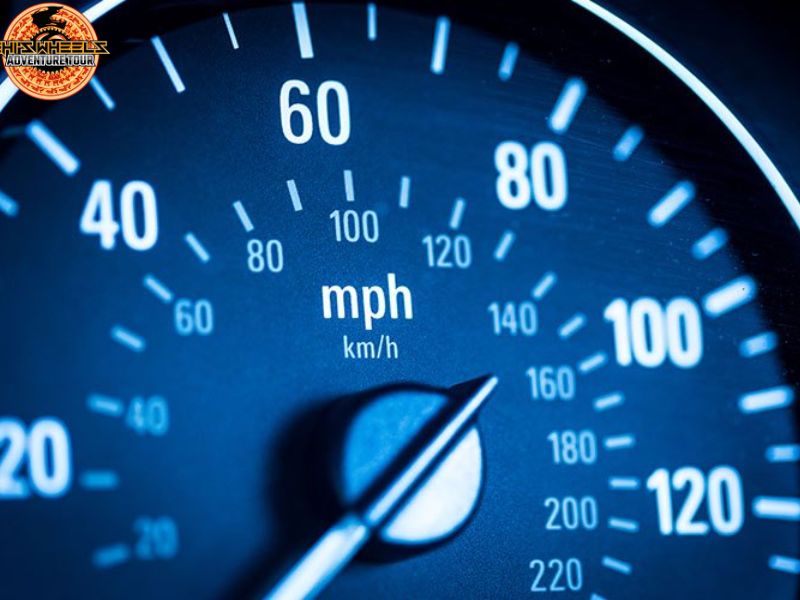
Carrying no more than two people on a motorbike
According to Vietnam’s Road Traffic Law, each motorbike is allowed to carry a maximum of two people, including the rider. This regulation is mandatory to ensure the safety of both the driver and other road users. There are a few exceptions, such as carrying a person to the hospital in an emergency, transporting children under 14 years old, or taking someone who has committed a violation to the authorities. However, for regular use—especially for tourists—you should always make sure that your motorbike carries only one rider and one passenger.
If you violate this rule, you may face administrative fines and could be stopped by the police, which can disrupt your travel plans and cause unnecessary inconvenience.
Keep a safe distance
One of the most important aspects of riding a motorbike in Vietnam is keeping a safe distance from the vehicle in front of you. This distance is not fixed—it depends on your current speed. Maintaining a safe distance not only gives you enough time to react to unexpected situations but is also a legal requirement under Vietnamese traffic law.
According to current regulations, the minimum safe distance between two vehicles is as follows:
- At 60 km/h: at least 35 meters
- At 60–80 km/h: at least 55 meters
- At 80–100 km/h: at least 70 meters
- At 100–120 km/h: at least 100 meters
Keep in mind that in busy urban environments like Hanoi or Ho Chi Minh City, maintaining an exact distance can be challenging due to the heavy traffic. Still, you should always try to keep as much space as possible between you and the vehicle ahead to improve your reaction time, avoid collisions, and comply with the law.
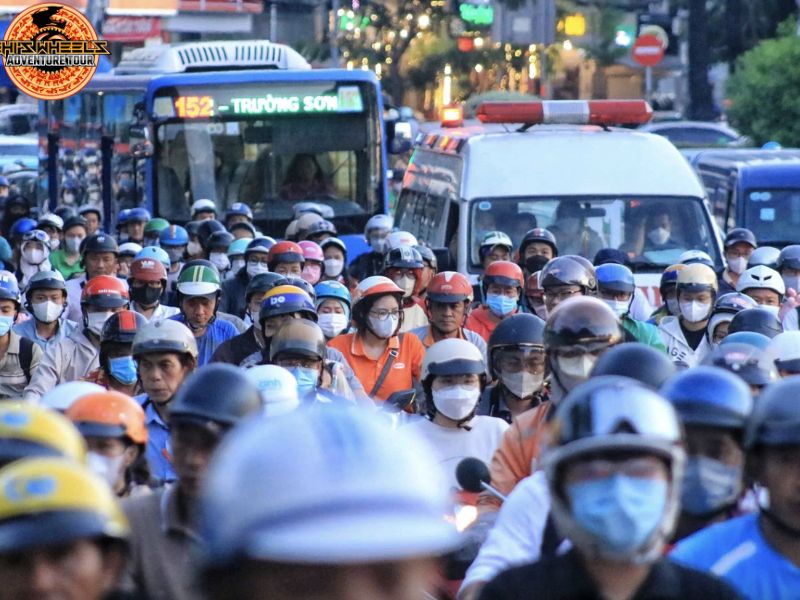
Do not use phones or audio devices while riding
When riding a motorbike in Vietnam, you are strictly prohibited from using mobile phones, earphones, or any other audio devices while driving. According to Vietnam’s Road Traffic Law, motorbike riders are not allowed to use audio devices, except for hearing aids. Using a phone or wearing earphones can distract you and significantly increase the risk of serious accidents.
Under current regulations, if you are caught using a phone or wearing earphones while riding, you may face administrative fines and even have your driver’s license suspended for 1 to 3 months. In addition, using your phone while moving can make you an easy target for street theft, especially in crowded areas. Therefore, if you need to use your phone, make sure to pull over to a safe spot and come to a complete stop before doing so. This simple precaution helps you stay safe and compliant with local traffic laws.
Obey traffic signals
Traffic light systems in Vietnam are installed at most intersections, roundabouts, and other major crossing points. Observing and obeying these signals is mandatory for all road users.
- Red light: You must come to a complete stop.
- Green light: You are allowed to proceed.
- Yellow light: This indicates that the light is about to turn red — you should slow down and prepare to stop, not speed up to pass through.
Many locals sometimes misunderstand the yellow light as a “last chance to go,” but this behavior violates traffic laws and may result in fines. More importantly, running yellow or red lights can easily cause serious accidents, endangering not only yourself but also others on the road.
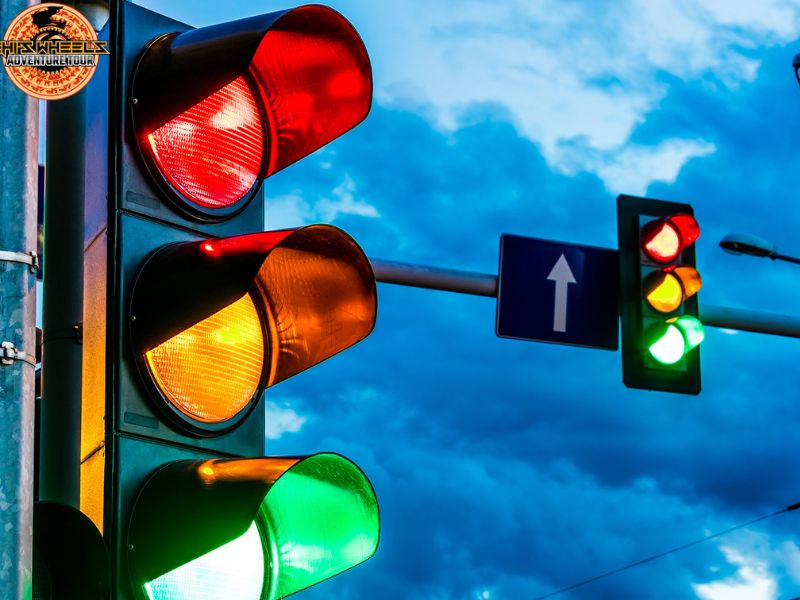
Do not ride a motorbike after drinking alcohol
Riding a motorbike after consuming alcohol or any stimulants is strictly prohibited under Vietnamese traffic law. Even a small amount of alcohol can result in penalties if your blood alcohol concentration exceeds the legal limit.
According to current regulations:
- Any alcohol concentration above 0 mg/100 ml of blood is considered a violation.
- Administrative fines range from 2 million to 40 million VND, depending on the severity of the offense and the type of vehicle.
- You may also face vehicle impoundment or license suspension.
In Vietnam, this is one of the most severely punished violations because it poses a high risk of serious accidents. Therefore, if you have consumed alcohol, you should choose alternative transportation such as taxis, ride-hailing services, or simply avoid driving altogether to keep yourself and others safe.
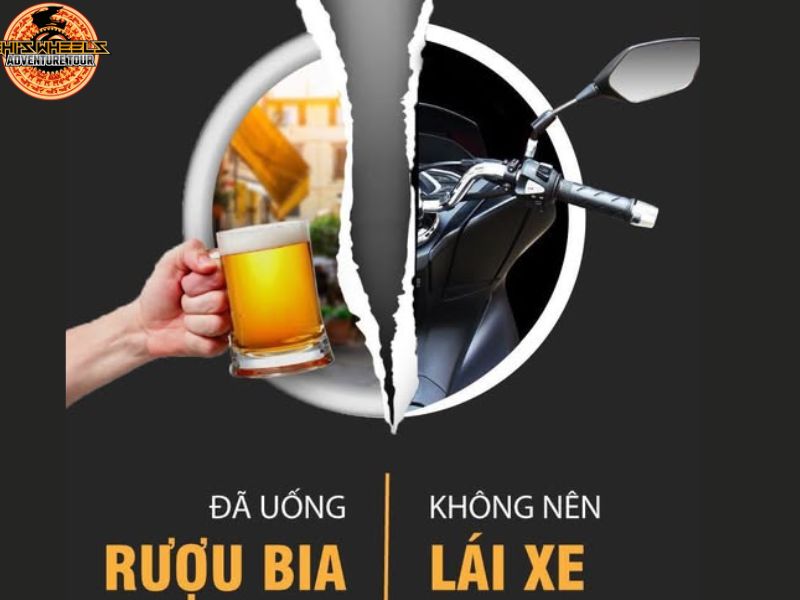
Park your motorbike in designated areas
When traveling around Vietnam by motorbike, it’s important to park only in designated areas. Avoid stopping or parking your bike:
- On sidewalks meant for pedestrians.
- In the middle of the road, where it could obstruct traffic.
- Near intersections, traffic lights, or official entrances such as government buildings or offices.
Instead, look for clearly marked parking lots or ask local staff for guidance. When renting a bike from Vietnammotorbiketour, you’ll receive detailed information on safe and legal parking spots, helping you avoid fines or the risk of having your bike towed or stolen.
Be cautious of street scams
Vietnam is well-known for its friendly and hospitable people, but like in many popular tourist destinations, there can still be occasional scams or petty theft, especially in crowded areas and tourist spots.
Some tips to protect your belongings:
- Always keep your bag, phone, wallet, and helmet close to you or stored safely in the bike’s compartment.
- Do not use your phone while riding — not only is it against the law, but it can also make you a target for theft.
- Avoid giving cash or your passport to strangers unless there’s a clear and legitimate reason.
- In any suspicious situation, contact the police immediately or call the emergency support number provided by your company.

Riding a motorbike in Vietnam is one of the best ways to truly experience the local rhythm of life, explore scenic routes, and enjoy full flexibility in your journey. However, to ensure your trip is safe, legal, and hassle-free, it’s essential to follow traffic laws and understand local driving culture.
At Vietnammotorbiketour, we not only provide high-quality motorbikes and standard safety helmets, but also offer detailed guidance on traffic regulations, safe riding techniques, and full support throughout your trip in case you encounter any issues on the road.

